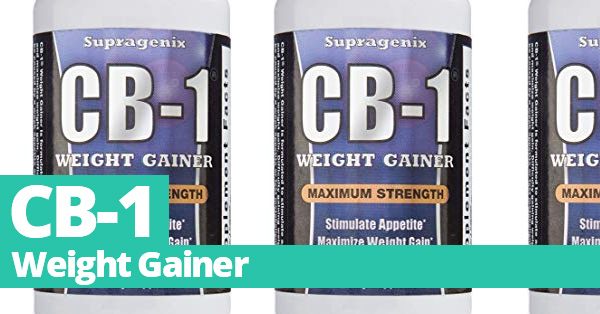Getting fit is a journey that often feels like a marathon rather than a sprint. For many, the question looms large: how long does it really take to see results? While some might expect a miraculous transformation overnight, the truth is a bit more nuanced. Spoiler alert: it’s not just about hitting the gym and hoping for the best.
In a world overflowing with quick-fix solutions and miracle diets, understanding the timeline for getting fit can feel overwhelming. But fear not! With the right mindset, a sprinkle of humor, and a dash of commitment, anyone can navigate this fitness maze. So buckle up as we dive into the factors that influence your fitness journey and how long it might take to turn those fitness goals into reality.
How Long Does it Take to Get Fit
Fitness encompasses multiple components, including cardiovascular endurance, strength, flexibility, and body composition. Each aspect contributes to overall health and wellness, making them significant in determining how long it takes to get fit.
Cardiovascular endurance refers to the body’s ability to perform prolonged exercises, such as running or cycling. Strength training builds muscle, while flexibility involves the range of motion in joints. Body composition, the ratio of fat to lean mass, affects metabolism and fitness levels.
Various factors influence how quickly an individual can achieve fitness goals. Age plays a critical role; younger individuals often see quicker results due to higher metabolism. Genetics also impact fitness potential, determining how the body responds to exercise. A clearly defined goal boosts motivation and influences the time frame for getting in shape.
Consistency in workouts and nutrition affects progress. Regular exercise, ideally three to five times a week, coupled with a balanced diet, yields more noticeable results. The combination of these elements supports faster adaptation to physical challenges.
Measurement is vital to monitor progress. Tracking changes in weight, strength, and endurance helps gauge fitness levels. Progression is often nonlinear; some may see changes within weeks while others may take months. Specific training programs align with personalized fitness goals, enhancing chances for success.
Engaging with a fitness community offers encouragement and accountability, further motivating individuals on their journey. Surrounding oneself with like-minded people can lead to improved results. A positive mindset fosters resilience, driving individuals to persist through challenges faced during their fitness journey.
Factors Influencing Fitness Duration

Several factors determine how long it takes to get fit. Understanding these elements helps individuals tailor their approach for the best results.
Age and Fitness Level
Age significantly influences fitness progress. Younger individuals often see faster improvements due to increased metabolism and recovery capabilities. For instance, adolescents generally respond well to strength training, often achieving noticeable muscle gains within weeks. Conversely, older adults may need longer to recover and adapt to new exercises. Fitness level also plays a crucial role. Newcomers may experience rapid changes early in their journey, while seasoned athletes often require more time to break through plateaus. Acknowledging personal age and fitness level enables realistic goal-setting.
Training Frequency and Intensity
Training frequency directly affects fitness duration. Regular workouts enhance muscle memory and conditioning. Individuals who exercise five to six times a week often achieve results faster than those who train sporadically. Additionally, workout intensity is crucial. High-intensity training typically produces quicker gains in strength and endurance compared to moderate sessions. For example, incorporating interval training can accelerate cardiovascular fitness improvements. Tailoring frequency and intensity according to individual capabilities promotes optimal progress in the fitness journey.
Typical Timeframes for Getting Fit
Achieving fitness involves understanding the timeframes associated with different goals. These timeframes depend largely on individual objectives and consistency in efforts.
Short-Term Goals
Short-term fitness goals often focus on immediate results such as weight loss, improved endurance, or increased strength. Individuals might notice changes in their bodies within 4 to 6 weeks of regular workouts. This period typically sees initial fat loss, boosted energy levels, and improved muscle tone. A structured plan prioritizing nutrition and exercise consistency enhances results during this phase. Engaging in high-intensity interval training (HIIT) or strength training 3 to 5 times weekly increases effectiveness. Achieving small victories like running a faster mile or completing an additional set can motivate individuals to remain committed to their routines.
Long-Term Goals
Long-term fitness goals usually encompass broader objectives such as substantial weight loss, muscle building, or overall health improvement. Achieving these goals often takes 6 months to several years of dedicated effort. Progress tends to be gradual, involving continuous adaptations of workout routines and nutrition plans. Regular assessments and adjustments help maintain motivation and accountability. For athletes or those seeking competitive fitness levels, the journey may extend even longer, potentially lasting several years. Diverse training programs focusing on all aspects of fitness, including strength training, cardiovascular exercises, and flexibility work, enhance the chances of sustained success.
Tips for Progressing Efficiently
Progressing efficiently in a fitness journey involves strategic planning and a consistent approach. Setting clear objectives and integrating regular evaluations can significantly enhance results.
Setting Realistic Goals
Goals should align with individual capabilities. Short-term targets, like losing 5 pounds or improving endurance in 4 weeks, provide actionable milestones. Long-term aspirations may include achieving a specific body composition or strength level. Establishing timelines encourages sustained motivation and commitment. Specific, measurable objectives foster accountability. A blend of intensity and variety in workouts facilitates continuous improvement. Breaking larger goals into smaller steps enhances the likelihood of success. Prioritize goals based on personal circumstances and fitness levels for maximum effectiveness.
Monitoring Progress
Regularly tracking progress allows for necessary adjustments. Assessment tools, like fitness apps or journals, record achievements and setbacks. Weekly check-ins can reveal trends in performance, such as increased endurance or muscle gain. Quantitative measures, such as weight, measurements, or workout intensity, inform adjustments clearly. Setting aside time to evaluate results every month provides a broader perspective. Adjusting workout routines based on feedback ensures optimal progression. Celebrating small victories keeps motivation high and reinforces positive behaviors. Engaging with a community or partner during assessments can also boost accountability.
Consistent Effort
Getting fit is a personal journey that varies for everyone. It involves commitment patience and a willingness to adapt. While quick fixes may tempt many the reality is that sustainable results come from consistent effort and a well-rounded approach to fitness.
By setting realistic goals and tracking progress individuals can stay motivated and focused. Engaging with a supportive community can also provide the encouragement needed to push through challenges. Remember that every small victory counts and contributes to the overall journey toward better health and fitness.
Ultimately the path to fitness is not just about the destination but also about enjoying the process and learning along the way. With the right mindset and dedication anyone can achieve their fitness goals over time.



